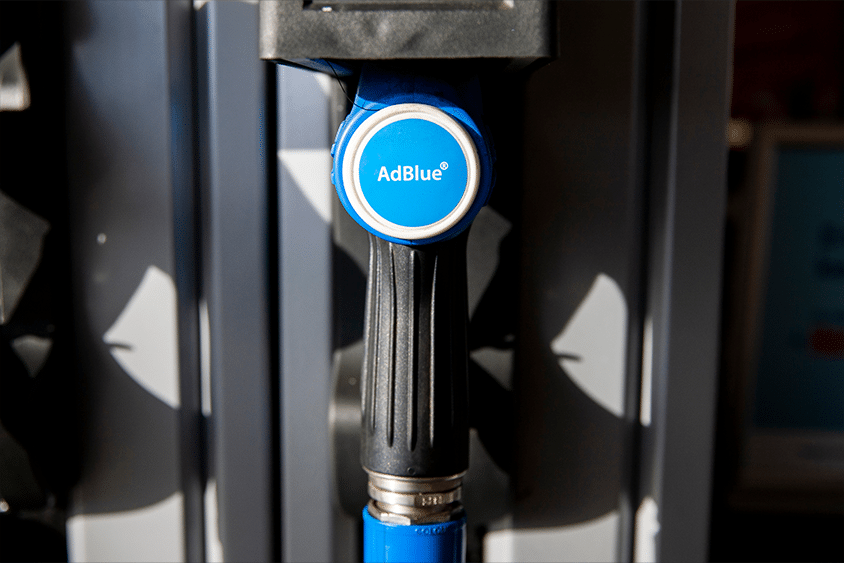As the shift toward electric vehicles gains momentum, we understand that your business needs to carefully consider the timing and method of transitioning to an electric fleet. This decision involves more than just financial factors; it also requires consideration of driver preferences, the feasibility of implementing EV charging infrastructure, and the administrative challenges of updating your fleet.
Given these complexities, we recognise that electric vehicles may not be the best fit for every new addition to your fleet. That’s why it’s important to explore other available fuel options. This comprehensive guide on petrol will help you make an informed decision about the most suitable fuel type for your business.
What is petrol?
In this section, we will discuss what the different types of petrol are and which are the best suited to different types of fleet vehicles or situations.
What is E5 petrol?
E5 petrol is a type of unleaded petrol that contains up to 5% ethanol, a renewable biofuel made from plant materials like sugarcane or corn. The “E” in E5 stands for ethanol, and the “5” indicates the percentage of ethanol mixed with the petrol.
What is E10 petrol?
E10 petrol is a type of unleaded petrol that contains up to 10% ethanol, a renewable biofuel made from plant materials such as corn or sugarcane. The “E” in E10 stands for ethanol, and the “10” indicates the percentage of ethanol mixed with the petrol.
E10 contains a higher percentage of ethanol compared to E5, which has up to 5% ethanol. This makes E10 slightly more renewable and potentially less harmful to the environment because ethanol produces fewer carbon emissions when burned compared to pure petrol.
Benefits of petrol fleet vehicles
Cost efficiency
If your drivers use fuel cards, this could result in lower overall fuel costs for your business.
Petrol vehicles also typically have a lower purchase price compared to diesel, electric, and hybrid models. Whether you’re buying the vehicle outright or through a contract purchase or hire agreement, this often translates to lower upfront costs or reduced monthly payments.
How much is petrol per litre?
As of now, the average price of petrol in the UK is £1.47 per litre according to the RAC. This can vary on a day-to-day basis depending on your location and the specific petrol station you visit, but this is the current national average.
How many miles per litre of petrol?
The number of miles per litre of petrol (MPL) can vary significantly depending on different factors, including the type of vehicle, driving conditions, and driving habits. With our mileage counter, you will be able to see how many miles your fleet vehicles are doing in a typical day, as well as other interesting insights.
Fuel efficiency for typical cars
The average fuel efficiency for cars in the UK is around 10 to 15 miles per litre (MPL). Smaller, more efficient vehicles, such as city cars or hybrids, can achieve closer to 15-20 MPL, while larger vehicles like SUVs might be closer to 8-12 MPL.
Factors Impacting Efficiency
Driving at higher speeds, carrying heavy loads, frequent stop-and-go driving, and poor vehicle maintenance can all reduce fuel efficiency while driving smoothly at moderate speeds on motorways can increase it.
Reduced emissions
While petrol vehicles emit fewer pollutants overall than diesel, incorporating petrol models into a predominantly diesel fleet could help lower your business’s overall emissions.
Considerations for petrol fleet vehicles
While petrol vehicles offer some benefits, they also have potential considerations:
Fuel efficiency
Petrol vehicles are often less fuel-efficient than other types of fuel, which can impact your fuel expenses, particularly if your drivers are less economical in their driving habits. This may warrant additional training to improve fuel efficiency.
Higher CO2 emissions
Petrol engines emit more CO2 per mile compared to other fuel types, which could result in higher penalties, such as increased Benefit-in-Kind (BIK) rates or higher company car tax contributions.
E5 and E10 fuel considerations
Recent changes to standard petrol options at fuel stations mean that E10, which contains up to 10% renewable ethanol, is now the default choice, replacing E5 with 5% ethanol.
This shift is part of an effort to reduce the environmental impact of petrol. However, it’s important to check the compatibility of older vehicles in your fleet with E10 fuel.
Is E10 harmful to vehicles?
Most modern vehicles can safely use E10 petrol. However, older models may experience issues due to the higher bioethanol content, which can be corrosive to certain components and potentially cause engine damage or blockages. Additionally, there might be a slight decrease in fuel efficiency when switching from E5 to E10, particularly in vehicles with smaller engines.
The value of premium petrol
Premium petrol, which remains an E5 blend, is recommended for vehicles that are not compatible with E10.
For drivers who prioritise fuel economy or those with older vehicles, using premium petrol can offer more mileage despite its higher cost.
Which petrol is best for your fleet
The best petrol option for your fleet depends on your fuel use priorities. E10 is widely available and more affordable, while E5 offers better fuel efficiency and a higher octane content, which can further enhance performance.
Mixing premium and super unleaded petrol
You can safely mix premium and super unleaded petrol in the same tank, allowing flexibility across your fleet without needing to assign specific fuel types to particular vehicles.
Deciding if petrol is right for your fleet
Regularly reviewing your fleet procurement policies and considering the fuel type for each new vehicle is crucial from a sustainability and cost angle. We recommend weighing the pros and cons of petrol, as outlined above, and comparing it with other fuel options to make the best choice for your fleet. Our guides on petrol vs. diesel, as well as hybrid and electric vehicles, can assist you in this decision-making process.
Manage your company petrol with a fuel card
Fuel Card Services work with major fuel brands to offer you competitive fuel prices that can help to save your business money when it comes to refilling your fleet vehicles with fuel.
To enquire about how fuel cards could help your business, contact our helpful team today.





